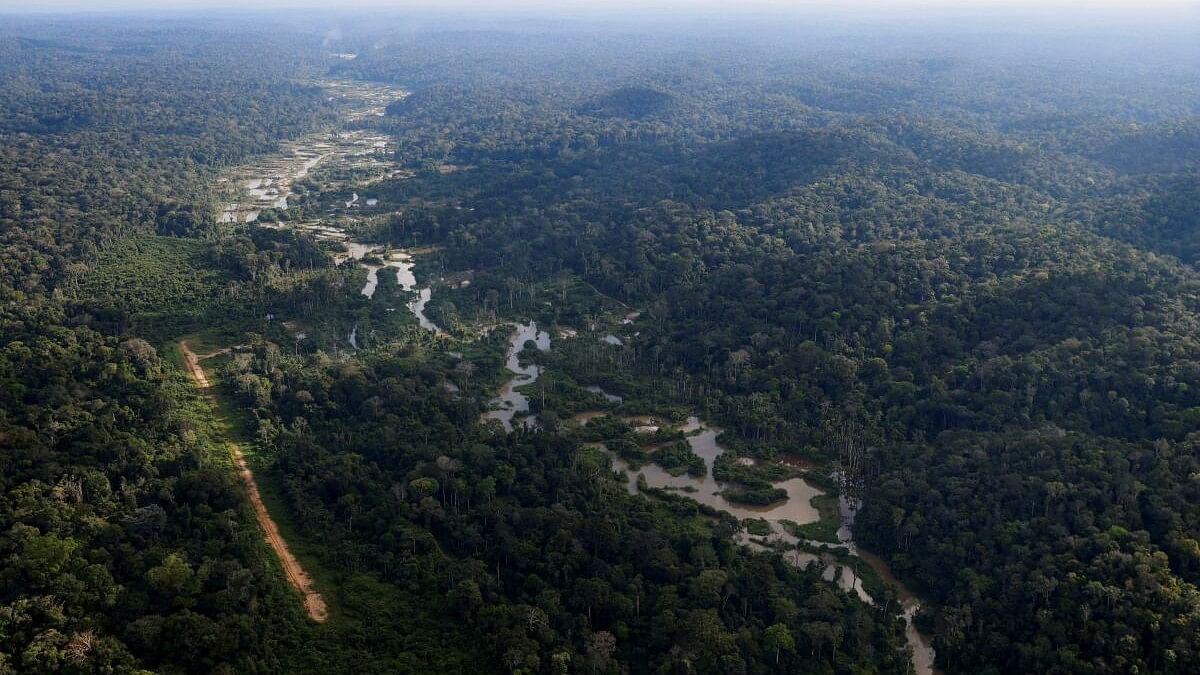
Amazon Rainforest.
Credit: Reuters Photo
Recent discoveries in the Amazon rainforest have challenged previous beliefs held by archaeologists. It was once thought that the region was sparsely populated by hunter-gatherer groups. However, over the past two decades, the uncovering of massive earthworks, pyramids, and roads spanning from Bolivia to Brazil has provided conclusive evidence that the Amazon was home to complex societies and interconnected cities long before European colonisation.
Now, new evidence has emerged of the oldest human society yet discovered in the region. Through the use of lidar survey, a laser mapping technology, funded by Ecuadorian National Institute for Cultural Heritage in 2015, a dense network of interconnected cities has been revealed beneath the forest in Ecuador's Upano Valley, reported Science Magazine. These settlements, which are at least 2500 years old, predate any other known complex Amazonian society by over 1000 years.
Lidar has revolutionized our understanding of the pre-Columbian Amazon by allowing researchers to see through the forest cover and reconstruct ancient sites, believes archaelogist Carla Jaimes Betancourt. By using specially equipped planes to emit laser pulses into the forest and measure their return path, previously hidden topographic features have been revealed.
Archaeologist Stéphen Rostain and his team have been excavating in the Upano Valley for nearly 30 years. They focused on two large settlements, Sangay and Kilamope, where they found mounds arranged around central plazas, pottery adorned with paint and incised lines, and large jugs containing remnants of traditional maize beer called chicha.
Radiocarbon dating indicates that the Upano sites were occupied from around 500 BCE to between 300-600 AD. While Rostain had an understanding of the numerous structures in the area, the lidar technology provided a comprehensive overview of the region.
This lidar data allowed researchers to identify and uncover a total of five large settlements and ten smaller ones across an area of 300 square kilometers.
The area consisted of over 6,000 earthen mounds, upon which residential and ceremonial buildings were constructed. These structures were surrounded by agricultural fields and hillside terraces where crops like corn, manioc, and sweet potato were grown and they featured drainage canals. The main roads within the site were notably wide, measuring 33 feet (10 meters), and extended for distances ranging from 6 to 12 miles (10-20km).
While determining the exact population is challenging, archaeologist Antoine Dorison, a co-author of the study from a French institute, suggests that the site housed a minimum of 10,000 individuals, potentially reaching peaks of 15,000 or even 30,000 inhabitants, reported Guardian. This population estimate is comparable to that of Roman-era London, which was the largest city in Britain at the time.
The scale of urbanism in the Upano Valley is comparable to famous sites like the Giza Plateau in Egypt or Teotihuacan in Mexico.
This discovery is just the beginning, as there is much more to be explored in the Ecuadorian Amazon, say archeologists. The network of roads suggests that the Upano sites existed simultaneously and are even older than other complex Amazonian societies.
Intricate pre-European societies have also been found in Bolivia and Brazil. The Upano Valley cities were more densely populated and interconnected compared to sites in Llanos de Mojos, a recently discovered ancient urban system in Bolivia.
The discovery of these new complex cultures in the 21st century is truly remarkable and highlights the ongoing potential for exploration and understanding of historical settlements across the Rainforest. “We’re just beginning to understand how these cities were functioning,” remarks Jaimes Betancourt, who studies Llanos de Mojos.